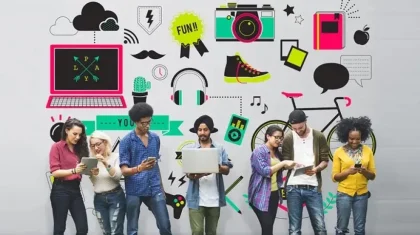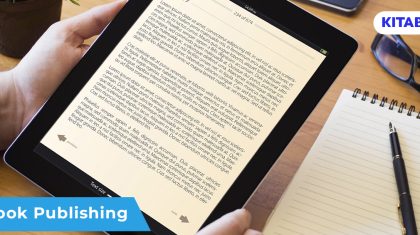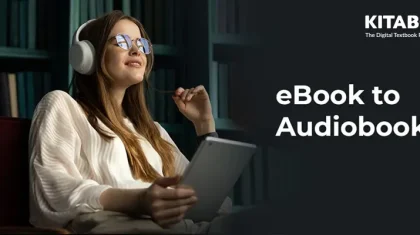
Collaborative Innovation: How Editors and Developers Can Work Together for Digital Success
In today’s age, K12 education is increasingly becoming digital. eLearning, hybrid learning, and digital learning platforms like KITABOO are quickly becoming the norm. Though this is definitely a step in the right direction, more innovative solutions are still needed to capture the dwindling attention span of K12 students.
In this scenario, the key to creating innovative educational solutions lies in the intersection of content development and digital innovation. This makes collaboration between editors, who oversee and polish content development, and developers, who build websites, apps, and software, more important than ever.
In this blog, we will delve into how editors and developers can work together to build innovative and interactive solutions for K12 students and academic institutions.
Table of Contents:
I. Innovative K12 Educational Solutions Editors and Developers Can Build Together
- Interactive eBooks
- Learning Management Systems
- Adaptive Learning Platforms
- Online Assessment Tools
- Intelligent Tutoring Systems
- Multimedia Course Materials
- Gamified Learning Platforms
- Virtual Reality Experiences
II. Tips for Ensuring Smooth Collaboration Between Editors and Developers
III. The End Note
Innovative K12 Educational Solutions Editors and Developers Can Build Together
Moving beyond traditional textbooks and other conventional educational materials and products, the collaboration between editors and developers can open up a whole new world of interesting possibilities in the field of K12 education. For instance, editors and developers can work together to build the following innovative K12 educational solutions, seamlessly bridging the gap between content development and digital innovation.
Interactive eBooks
eBooks, an economical alternative to physical textbooks, are here to stay and are expected to become a more than $15 billion industry by 2028. Editors and developers can add a fun twist to the convenient reading experience provided by eBooks by making it interactive.
While developing interactive ebooks, editors can ensure that the content meets the latest educational standards. Developers can ensure that all the interactive features, such as speech-to-text, search tool, bookmark tool, highlighter tool, and other customizable options, are present in the eBooks.
Learning Management Systems
Learning management systems, or LMS, enable teachers to effectively deliver educational materials and simultaneously track students’ progress. Editors and developers can work together to build a more easy-to-use LMS.
Editors can ensure that the educational materials teachers provide and track through the LMS are engaging and align with the curriculum. Developers can ensure that LMS is user-friendly and equipped with features that aim to improve the learning experience.
Adaptive Learning Platforms
Adaptive learning platforms provide personalized learning experiences driven by technology. Adaptive learning platforms employ algorithms to analyze data and, as a result, keep customizing the learning experience to students’ needs.
Working together, editors can develop diverse educational materials that meet students’ distinct learning needs. Developers, on the other hand, can build the AI-powered technological infrastructure required for adaptive learning platforms.
Online Assessment Tools
Online assessment tools test students’ knowledge and enable teachers to evaluate students’ progress and provide feedback. Working together, editors and developers can curate interactive and engaging online assessment tools.
Editors can develop a large variety of questions that will comprehensively assess students’ theoretical as well as practical knowledge. Developers can build interactive assessment tools that incorporate these questions in an engaging way and also generate reports automatically upon each test’s completion.
Intelligent Tutoring Systems
Intelligent tutoring systems leverage the power of artificial intelligence to provide computer-based, human-like instruction and feedback. Editors and developers can together build intuitive, intelligent tutoring systems.
Editors can work on developing the required educational content, while developers can supplement their efforts by developing well-tested AI-driven tutoring systems that are bug-free and run smoothly.
Multimedia Course Materials
Multimedia course materials engage students with ease and help them build a deeper understanding of their course concepts. Working together, editors and developers can build multimedia course materials to deliver a dynamic learning experience for K12 students.
Editors can develop bite-sized, easy-to-understand educational content for K12 students, while developers can build the technical infrastructure to incorporate this content into a variety of media, such as animations, videos, infographics, graphics, and more.
Gamified Learning Platforms
According to Forbes, 76 percent of kids in the USA play video games every week. In addition, gamification has been found to improve student motivation and learning outcomes. These findings make the development of gamified learning platforms the need of the hour.
Editors and developers can together develop attractive gamified educational content and gamification components like points, badges, scoreboards, and more. They can build the overall infrastructure of gamified learning platforms to provide a highly captivating learning experience to K12 students.
Virtual Reality Experiences
Virtual reality enables students to understand the realistic applications of bookish educational content. For instance, virtual reality headsets allow students to see the functioning of the human heart. They also enable them to view different planets and their moons in the universe and virtually visit museums and historical sites like the Pyramids of Giza.
Working together, editors and developers can develop virtual reality headsets that showcase computer-generated simulations of educational content in 3D and deliver immersive learning experiences to students.
Tips for Ensuring Smooth Collaboration between Editors and Developers
The efficient development of the above K12 solutions is contingent on smooth and effective collaboration between editors and developers. Here are a few tips for ensuring a smooth collaboration that is free from any misunderstandings:
- Encourage open and clear communication to ensure clarity about each other’s roles and responsibilities
- Employ collaborative tools to provide hassle-free opportunities for collaboration between editors and developers
- Hold regular meetings to review progress, address roadblocks, and discuss plans for future developments
- Ensure editors and developers are up-to-date with the latest developments in K12 education through training sessions and workshops
- Establish a mechanism in place where editors and developers can provide each other with constructive feedback
The End Note
The combined efforts of editors and developers can produce innovative educational solutions, unleashing new learning experiences for K12 students.
Though collaboration between editors and developers to integrate content development and digital innovation can be very time-and-labor-intensive, making partnerships with digital content development platforms like KITABOO an excellent idea.
KITABOO enables K12 editors to curate custom multimedia-rich content securely and at scale. KITABOO also enables editors and developers to develop engaging content with interactive features in multiple languages. In addition, KITABOO enables developers to leverage the power of technological tools like AI and VR to deliver realistic and captivating learning experiences.
To know more, get in touch with contact@kitaboo.com.
Discover how a mobile-first training platform can help your organization.
KITABOO is a cloud-based platform to create, deliver & track mobile-first interactive training content.


